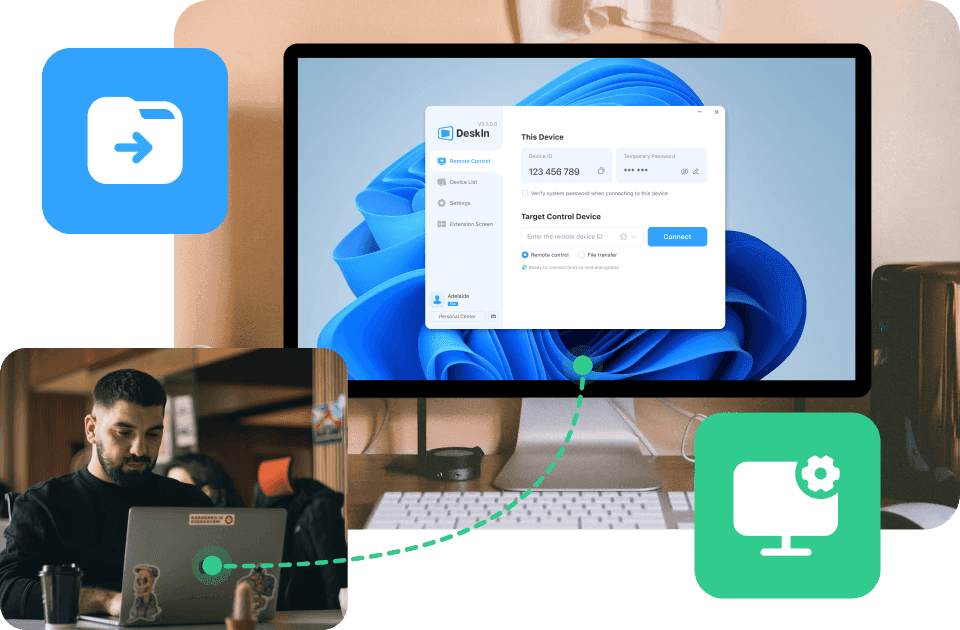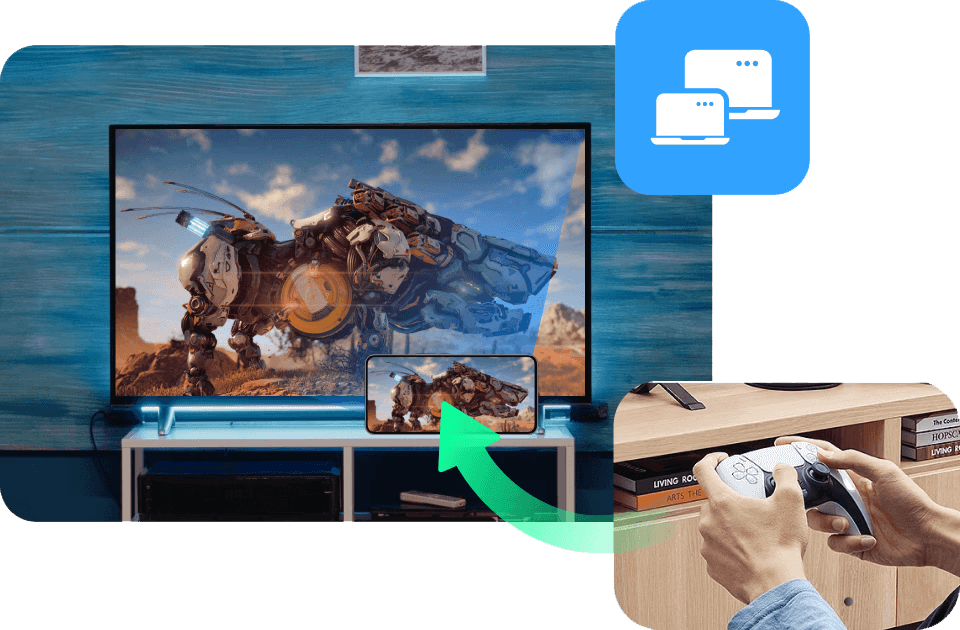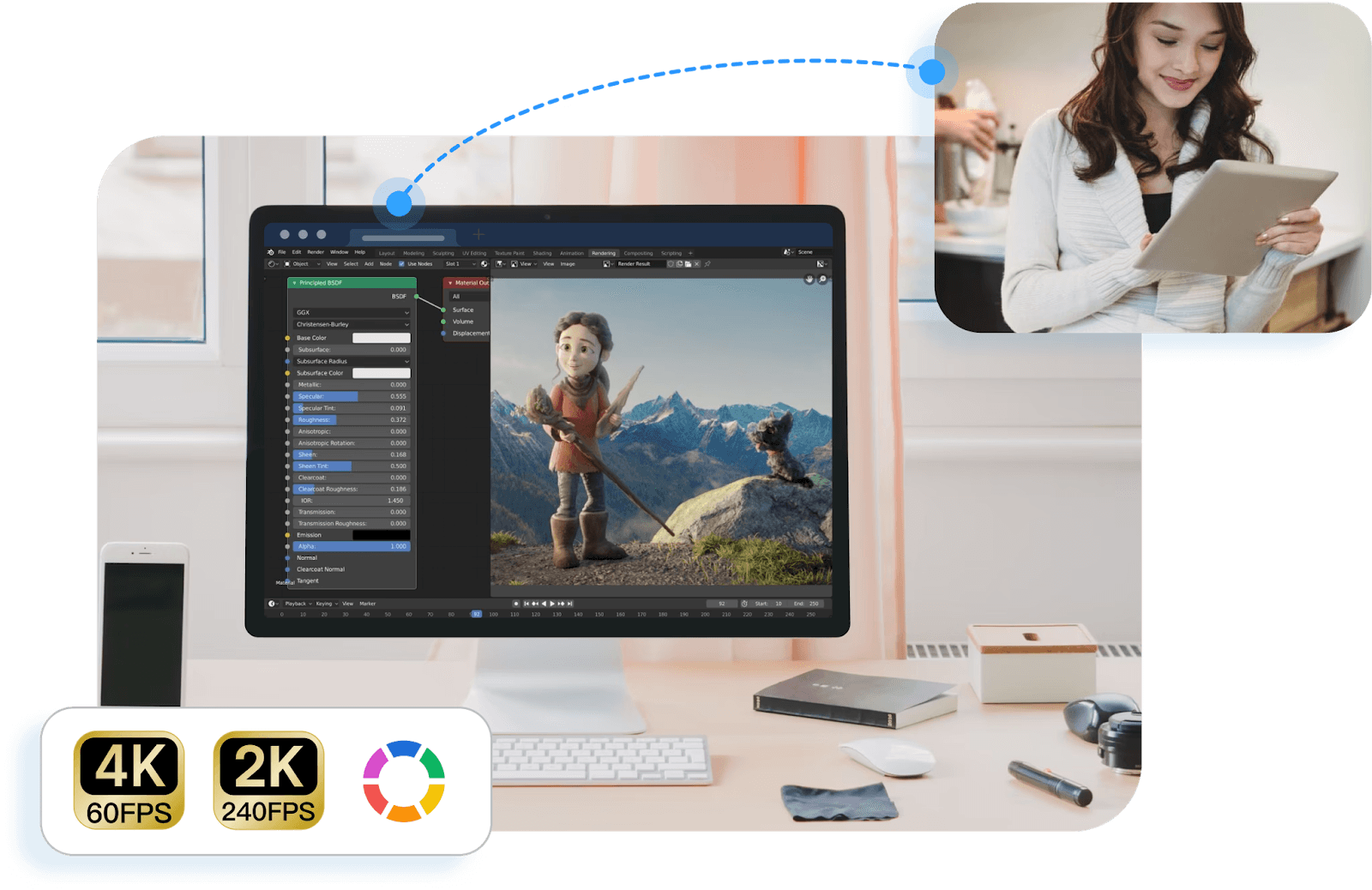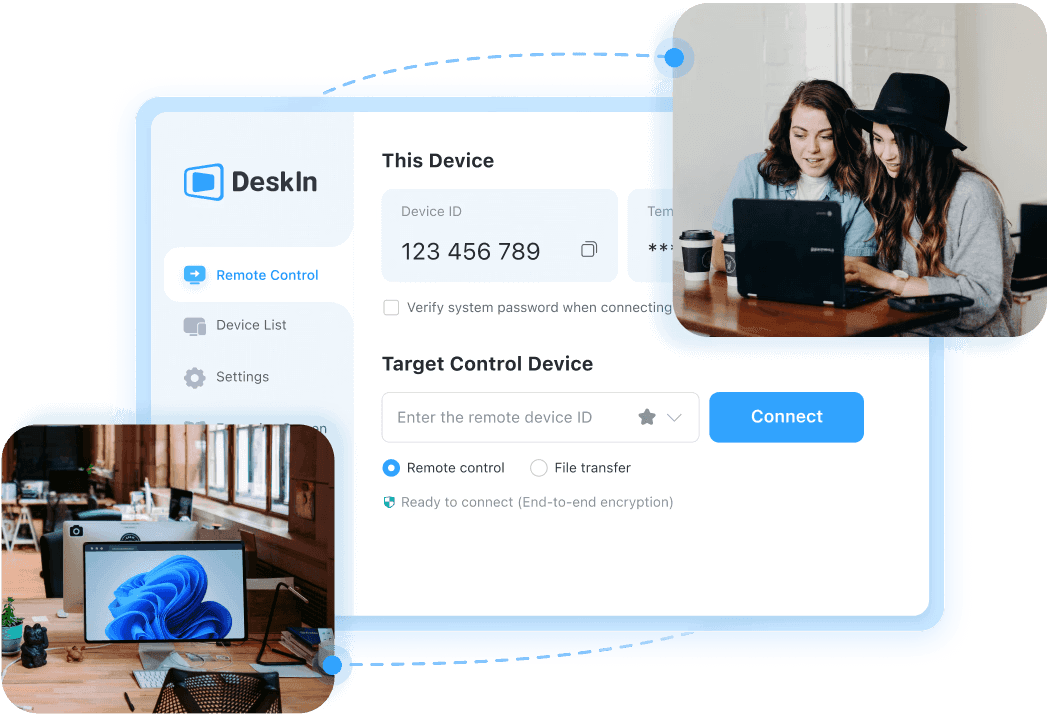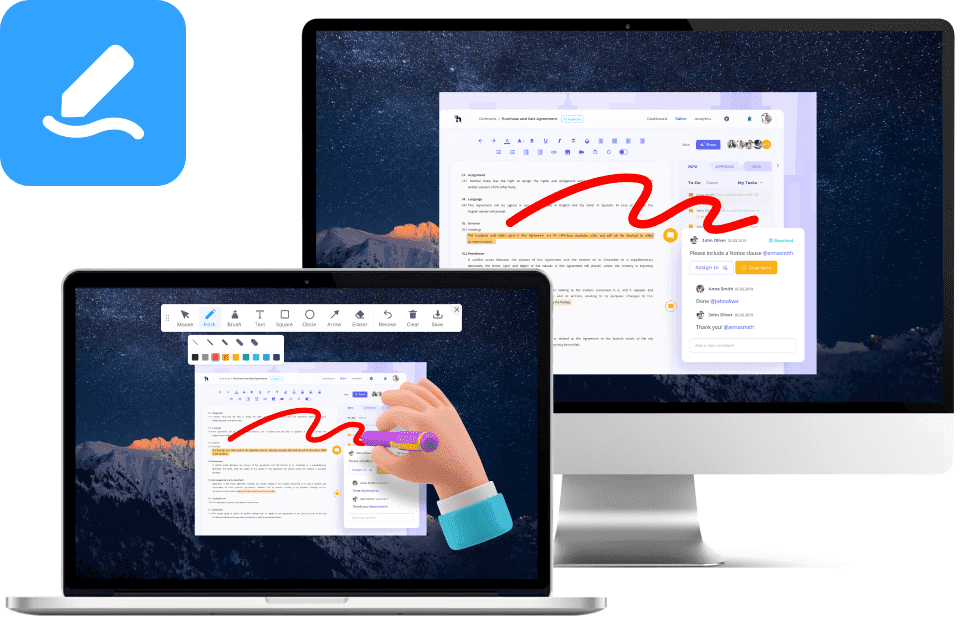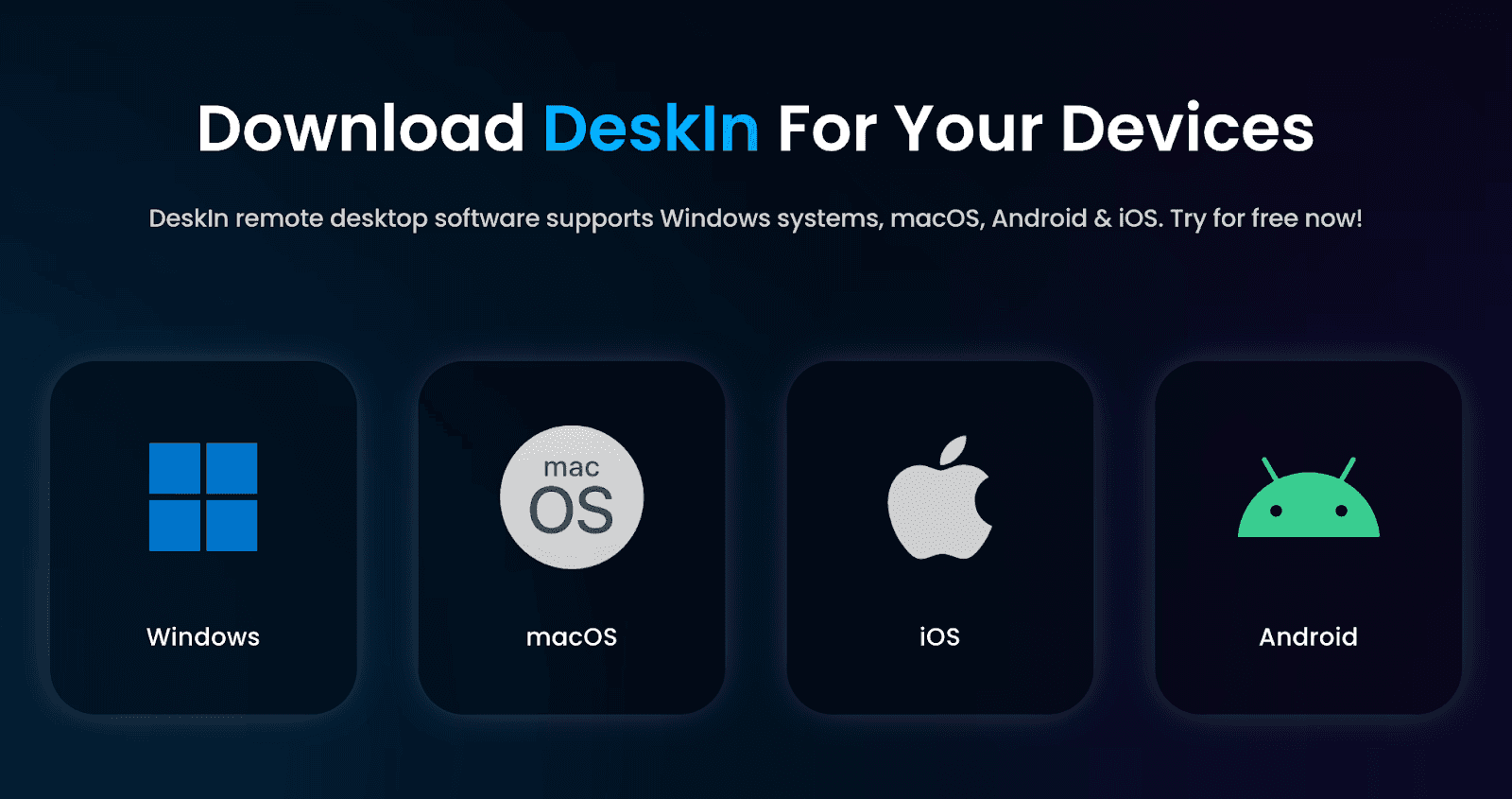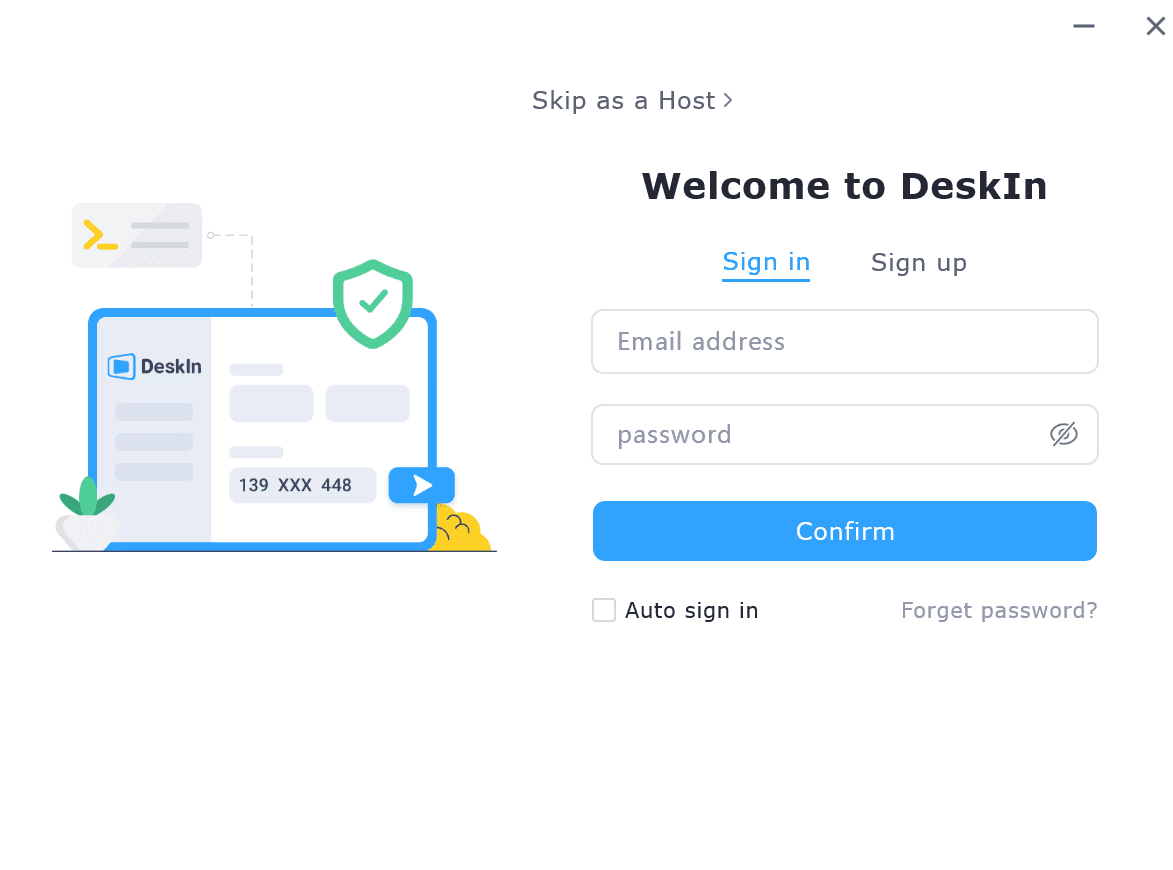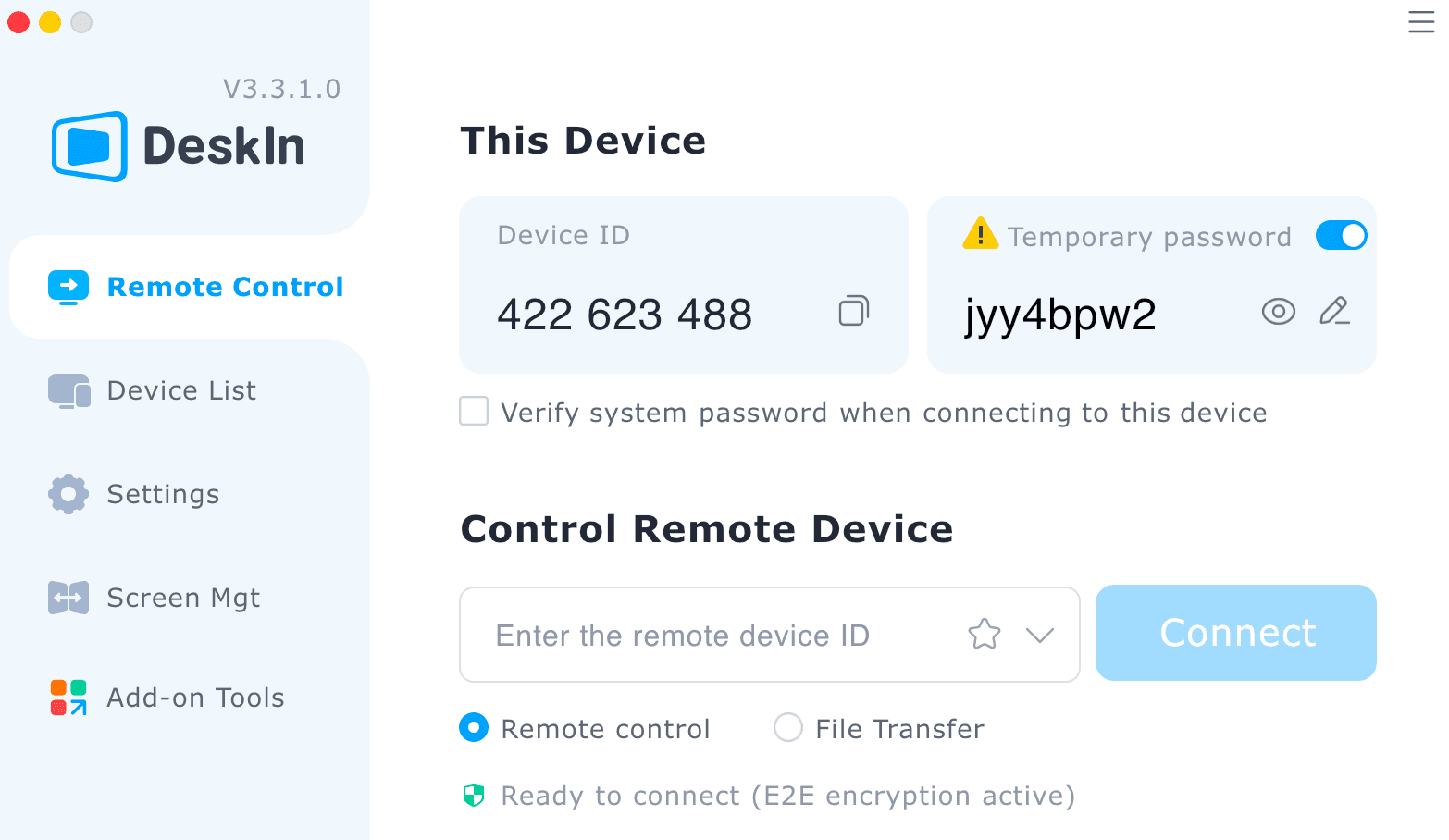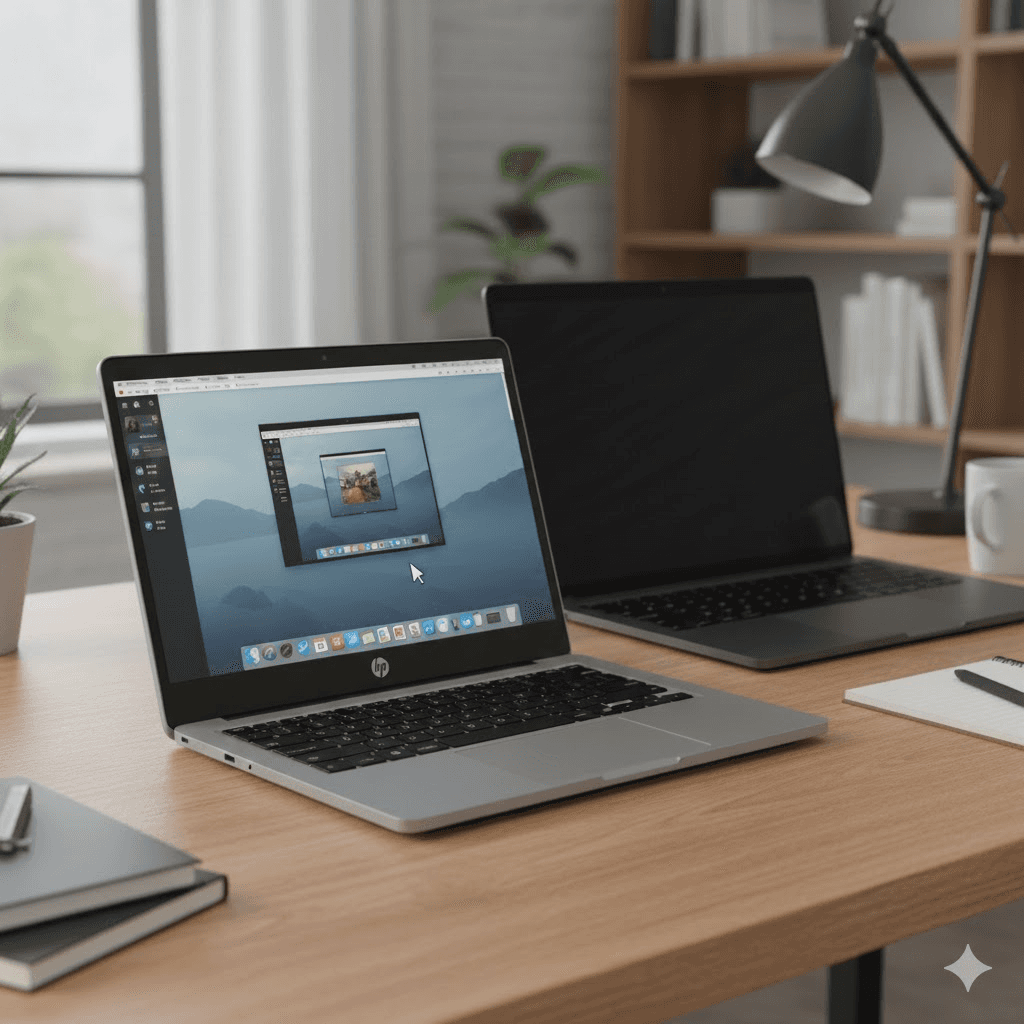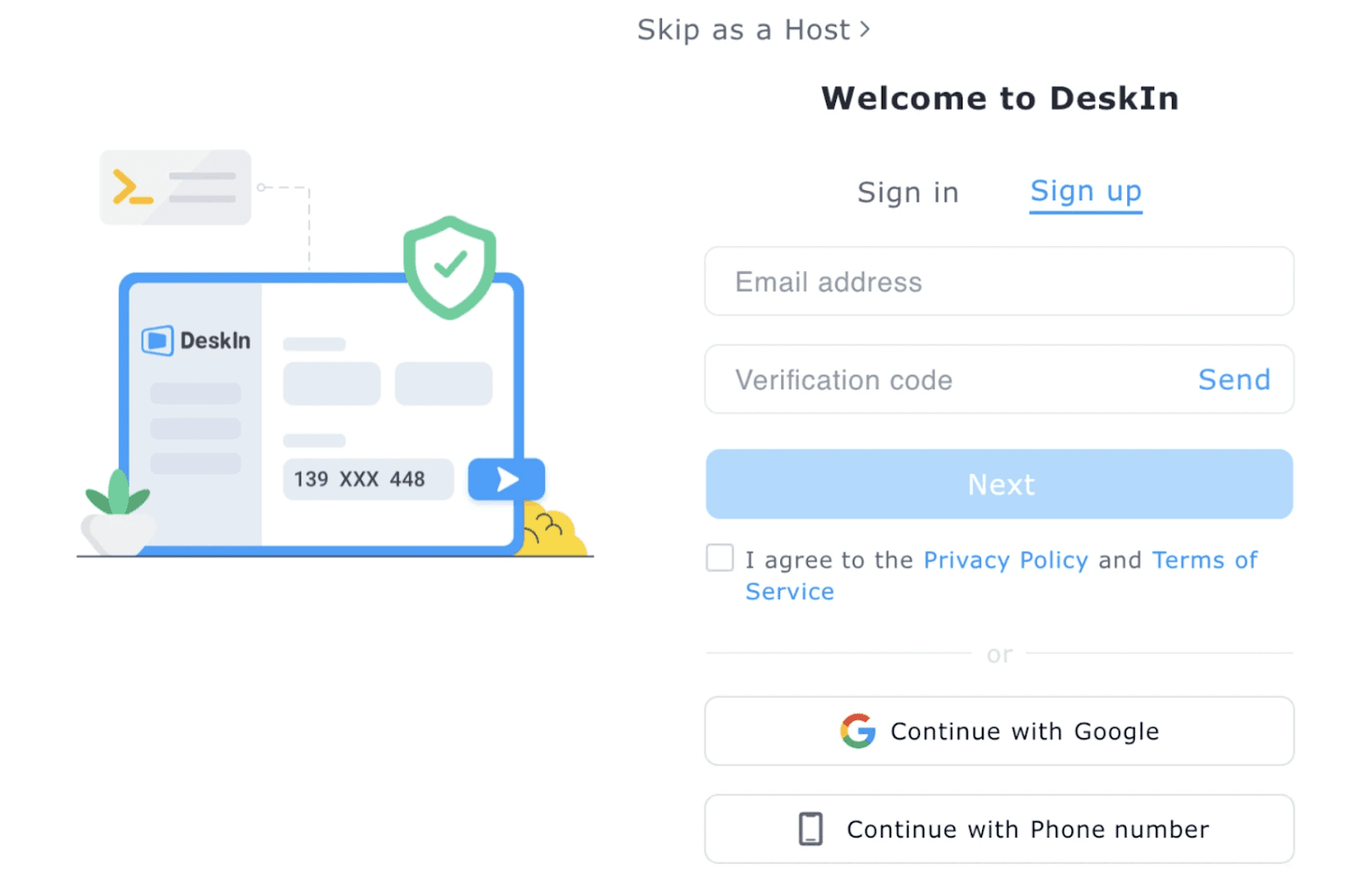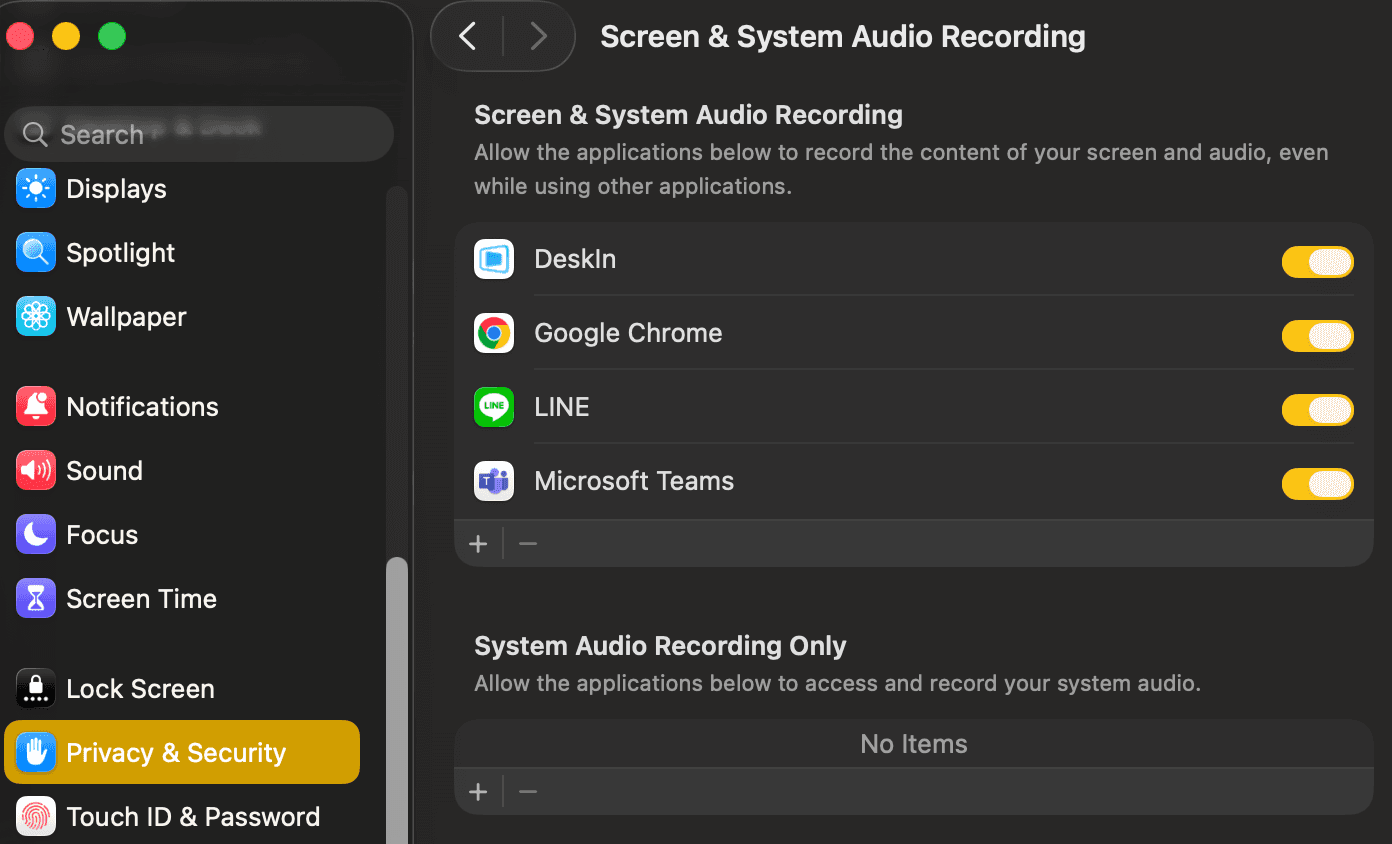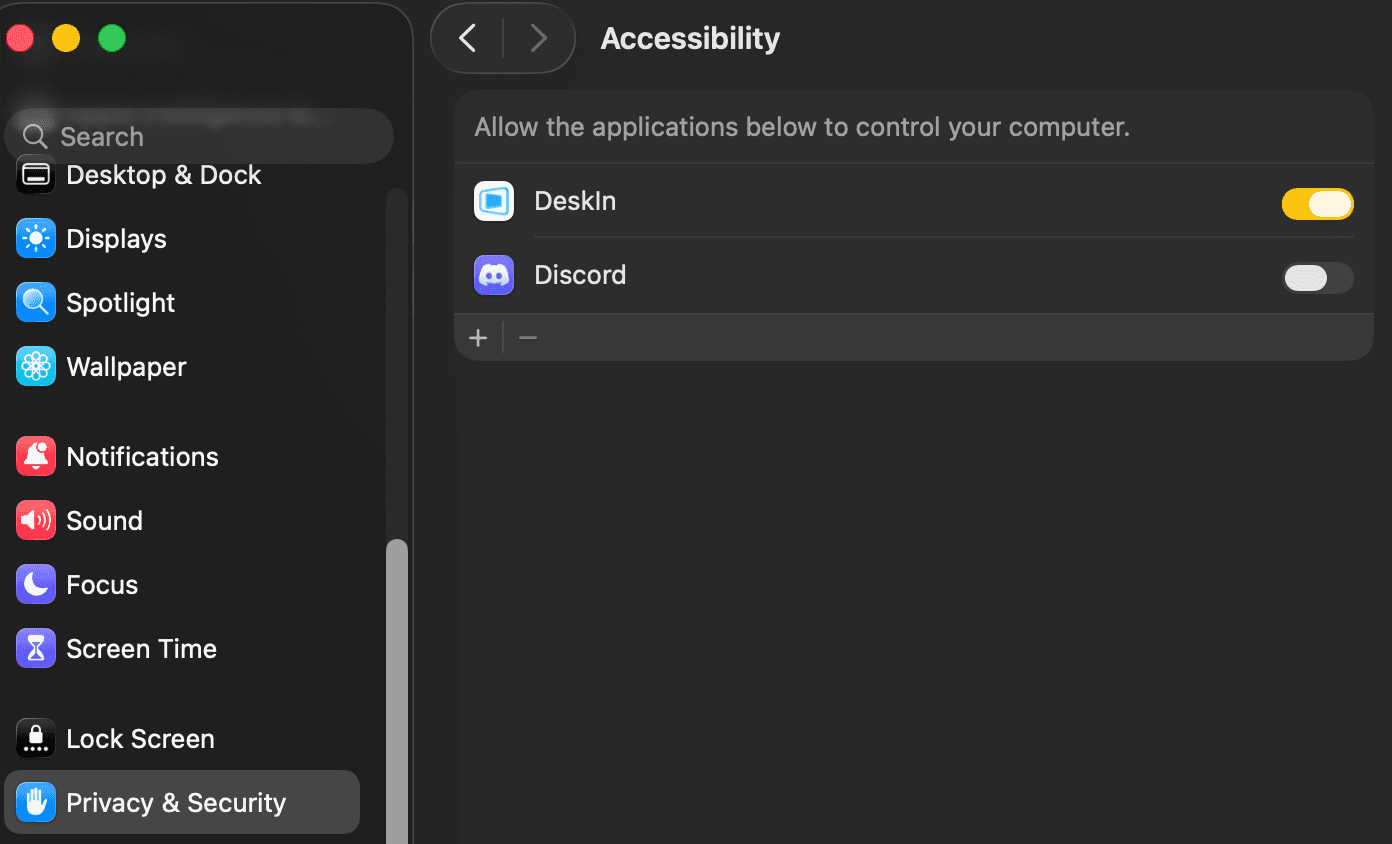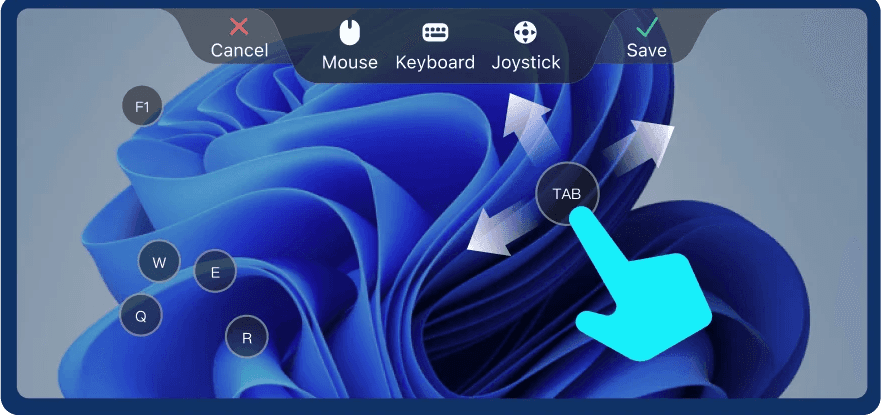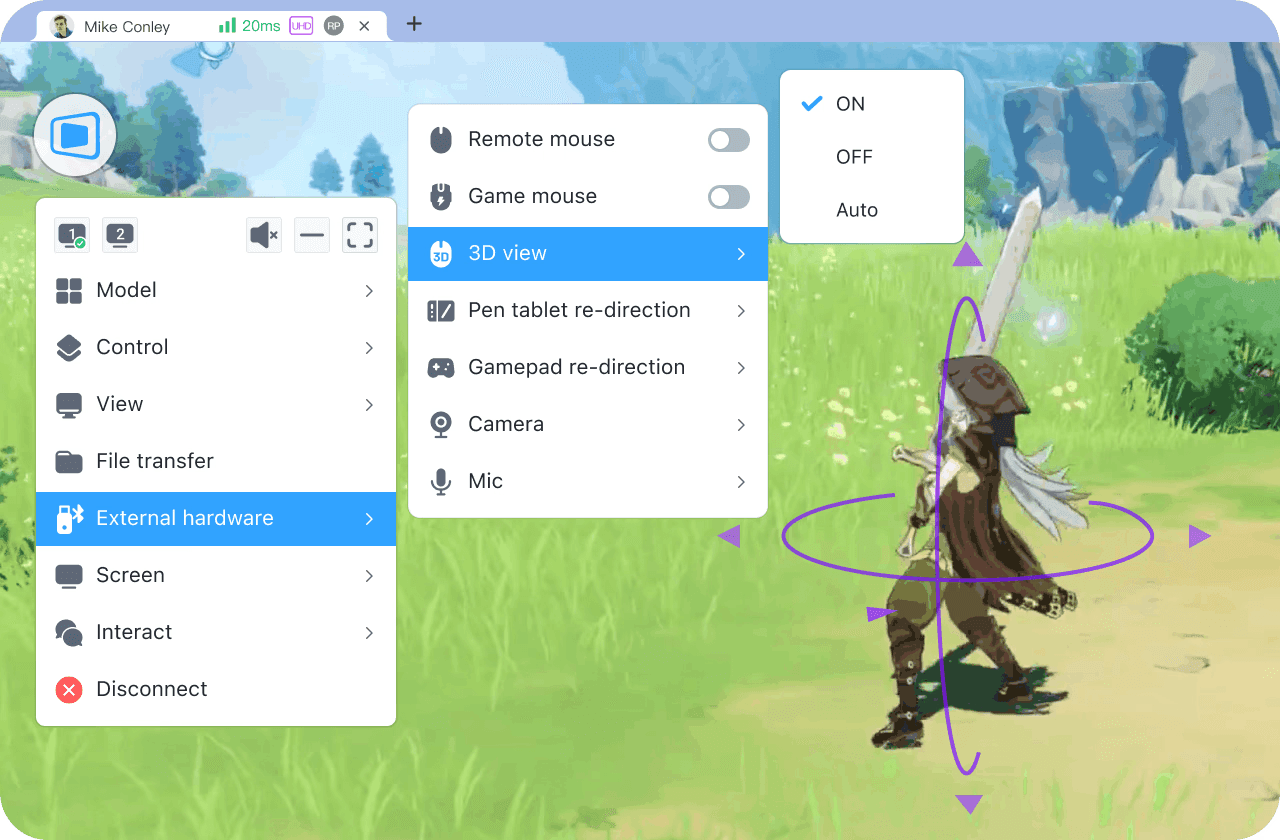Can you use Microsoft Remote Desktop to connect to your MacBook or iMac? The answer is a bit more nuanced than a simple yes or no. While Microsoft's remote desktop solution (now updated and rebranded as the Windows App) doesn't support remote controlling a Mac from another device, it does allow you to control a Windows PC from your Mac, and that's what most of you are trying to do.
Whether you're working from home, supporting a remote client, or simply trying to log into your office PC from a MacBook, Microsoft's remote desktop tool remains one of the most stable and secure options. In this guide, we'll walk you through exactly how to use Microsoft Remote Desktop on a Mac, help you determine if it's the right fit for your remote access needs, and introduce a great alternative, DeskIn, if you're looking for more flexibility or features. You can use DeskIn to remotely control a Mac in less than 3 minutes.
👀 Note: If you're interested in the transition from Microsoft Remote Desktop to the Windows app, read the following articles for more information.
How to Download and Set Up Microsoft Remote Desktop on Mac
Microsoft has gradually replaced the Microsoft Remote Desktop connection for Mac with the new Windows App, which supports services like Windows 365, Azure Virtual Desktop, and RemoteApp. If you're still using the older version, it's recommended to upgrade for continued support and improved features to control your Windows PC from your Mac with ease..
Currently, you can only download the Windows App through the Mac App Store. Unfortunately, there is no offline installer, nor can you download the app directly via a browser. Here's how to easily download and set up Microsoft's Windows App for macOS from the App Store:
Step 1. Download Microsoft Remote Desktop from the Mac App Store
Open the Mac App Store.
In the search bar, type "Microsoft Remote Desktop" or "Windows App".
Click on the correct listing and download the latest version of the app.
Once the app is downloaded and installed, open it from your Applications folder to begin the setup process.

Step 2. Enable Remote Desktop on Your Windows PC
On your Windows PC, go to "System Settings > Remote Desktop".
Toggle on the option to allow remote connections.
Ensure that the PC remains powered on and connected to the internet.
Your Windows PC must stay accessible for remote sessions, so confirm that it's not set to automatically sleep or turn off.
Step 3. Add Your PC to Microsoft Remote Desktop on Mac
On your Mac, open the Windows App (Microsoft Remote Desktop).
Click on the "+ Add PC" button.
Enter the PC name (device name) or IP address of the Windows PC you want to connect to. You can find this information on the Windows PC by going to "Settings > System > About" or by running "ipconfig" in the "Command Prompt".
Enter the "Windows account credentials" (username and password) used on the target PC.

Are the steps too complicated? Maybe you should try DeskIn—no complicated setup, and just click the download button here to get started!

Step 4. Customize Your Connection Preferences
Before connecting, you can configure various settings to improve the experience:
Display settings: Adjust the resolution to match your screen size.
Audio redirection: Decide if you want to hear sound from your Windows PC through your Mac.
Clipboard sharing: Enable copy/paste between your Mac and the Windows PC.
Local resources: Share local folders and printers, if necessary.
Make sure to tailor these preferences based on your connection speed and specific use case (work tasks, gaming, remote support, etc.). Optimizing these settings can make a significant difference in the quality of your remote session.
Step 5. Connect to Your Windows PC
Once you've configured all your preferences, click the "Connect" button. After a brief loading period, the full Windows desktop environment will appear on your Mac, giving you full control as though you were sitting right in front of the PC. Now, you can use your Windows PC remotely from your Mac seamlessly!

Tips for a Smooth Microsoft Remote Desktop User Experience
When using Microsoft Remote Desktop to control your Mac from Windows or vice versa, optimizing both the setup and connection quality can significantly enhance your remote access experience. Here are some tips to ensure a smooth and uninterrupted session.
Keep Your Windows PC Always On or Enable Wake-on-LAN. Ensure your Windows PC stays powered on or enables Wake-on-LAN. This feature allows your PC to be remotely awakened from sleep or hibernation. Without this, you won't be able to establish a connection if the PC is turned off.
Optimize Your Network Connection For the best experience.
Wired Ethernet: Provides the most stable and fastest connection, reducing latency.
5GHz Wi-Fi: Offers faster speeds and less interference compared to 2.4GHz, improving overall performance.
Use the Same Network (If Possible) For better speed and responsiveness, ensure both your Windows PC and Mac are connected to the same local network (Wi-Fi or Ethernet).
Use Multiple Monitors. If you have multiple displays, Microsoft Remote Desktop can extend your desktop. This feature is useful for multitasking, so configure your display settings accordingly.
💥 Microsoft Remote Desktop – Key Drawbacks:
Windows Pro required: Not supported on Windows Home editions.
Complex setup for remote access: Needs port forwarding or VPN for external connections.
Single user session only: Doesn’t support multiple simultaneous users.
Performance issues on weak networks: laggy under low bandwidth or high latency.
Limited mobile experience: Mobile apps are basic and not touch-optimized.
Bonus: Best Alternative to Microsoft Remote Desktop for Mac
While Microsoft Remote Desktop provides excellent remote access capabilities, it may not always meet every user's needs, especially if you're looking for something more lightweight, versatile, or tailored to business environments. If you're seeking an alternative for remote desktop control, DeskIn stands out as one of the best options available.
DeskIn is a powerful, user-friendly remote control tool designed for both personal and business use. It supports Mac, Windows, iOS, and Android devices, making it a versatile solution for any platform. With DeskIn, you can easily access your Windows PC from your Mac, or control other devices, such as mobile phones and tablets. Thus, it is considered the best remote access software.
👍 Key Features of DeskIn:
Cross-Platform Support: Connect from Mac to Windows, or even between Android and iOS devices.
High-Performance Remote Control: Ideal for business needs, offering smooth, responsive connections.
File Transfer & Collaboration: Seamlessly transfer files and collaborate with your team.
Low Latency & High Security: Ensures fast, encrypted connections for safe remote work.
Lightweight & Easy to Use: Quick setup, perfect for casual and business users.
Now, let's check out how to use DeskIn to remote control your Windows PC from your MacBook or iMac.
Step 1. Visit the DeskIn website or your app store to download the app. Install it on both your Mac and your Windows PC (or any other device you wish to control). Click here to download.

Step 2. Open DeskIn on both devices. Sign up for a DeskIn account if you don't have one, or log in if you already have an account.

Step 3. On your Mac, click "Add Device" and enter the ID or details of the Windows PC (or other device) you want to control. Accept the connection request on the target device to establish a secure connection.
Step 4. Once connected, you'll see your Windows PC screen on your Mac. You can now control the PC remotely, transfer files, and collaborate as if you were sitting right in front of it.
Start with the free version — DeskIn works out-of-the-box for most home and work use cases! Click here to download.


FAQs About Microsoft Remote Desktop Connection for Mac
Does Microsoft Remote Desktop for Mac support dual monitors?
Yes. The Windows App (formerly Microsoft Remote Desktop) for Mac supports multiple monitors when connecting to a Windows PC. You can enable this feature by going to your PC's display settings in the app and selecting the option to "Use all monitors." This is especially useful for multitasking or extended workspace setups.
Can I transfer files from my Mac to the Windows PC during a session?
Yes, but with limitations. While Microsoft Remote Desktop does not support direct drag-and-drop file transfers between Mac and Windows, you can share local Mac folders with the remote Windows session. Simply configure folder redirection in the PC's connection settings under the "Folders" tab before connecting.
If that's too limited or slow, DeskIn enables high-speed file transfer with full drag-and-drop — no folder mapping or advanced configuration needed.
Does Microsoft Remote Desktop work over the internet or only on local networks?
It works both ways. You can access your Windows PC from your Mac over the internet as long as the PC is configured correctly, has a public IP address or VPN access, and Remote Desktop is enabled. For best performance, ensure both devices have stable internet connections.
Can Microsoft Remote Desktop connect to a Mac from a Windows PC?
No. Currently, Microsoft Remote Desktop does not support remote control of a Mac from a Windows PC. It only allows controlling a Windows PC from a Mac. If you need to remote control a Mac from Windows, you'll need to use a third-party solution like DeskIn.
Final Words
Connecting your Mac to Microsoft Remote Desktop is a reliable way to access your Windows PC remotely, ideal for personal use or working across platforms. With just a few setup steps, downloading the Windows App from the Mac App Store, enabling Remote Desktop on your Windows PC, and configuring your connection, you can enjoy full control of your Windows desktop from macOS.
For simple, everyday use, Microsoft Remote Desktop offers a solid and secure solution. But if you're looking for a faster, more lightweight experience or need professional features like file transfers and collaboration tools, DeskIn is a powerful alternative worth considering. Choose the tool that best matches your remote access needs, and start connecting today. It’s especially useful if you’re dealing with cross-platform workflows, need real-time collaboration, or want to avoid the setup complexity of RDP/VPN. Try it today — it’s fast, free, and secure!

Can you use Microsoft Remote Desktop to connect to your MacBook or iMac? The answer is a bit more nuanced than a simple yes or no. While Microsoft's remote desktop solution (now updated and rebranded as the Windows App) doesn't support remote controlling a Mac from another device, it does allow you to control a Windows PC from your Mac, and that's what most of you are trying to do.
Whether you're working from home, supporting a remote client, or simply trying to log into your office PC from a MacBook, Microsoft's remote desktop tool remains one of the most stable and secure options. In this guide, we'll walk you through exactly how to use Microsoft Remote Desktop on a Mac, help you determine if it's the right fit for your remote access needs, and introduce a great alternative, DeskIn, if you're looking for more flexibility or features. You can use DeskIn to remotely control a Mac in less than 3 minutes.
👀 Note: If you're interested in the transition from Microsoft Remote Desktop to the Windows app, read the following articles for more information.
How to Download and Set Up Microsoft Remote Desktop on Mac
Microsoft has gradually replaced the Microsoft Remote Desktop connection for Mac with the new Windows App, which supports services like Windows 365, Azure Virtual Desktop, and RemoteApp. If you're still using the older version, it's recommended to upgrade for continued support and improved features to control your Windows PC from your Mac with ease..
Currently, you can only download the Windows App through the Mac App Store. Unfortunately, there is no offline installer, nor can you download the app directly via a browser. Here's how to easily download and set up Microsoft's Windows App for macOS from the App Store:
Step 1. Download Microsoft Remote Desktop from the Mac App Store
Open the Mac App Store.
In the search bar, type "Microsoft Remote Desktop" or "Windows App".
Click on the correct listing and download the latest version of the app.
Once the app is downloaded and installed, open it from your Applications folder to begin the setup process.

Step 2. Enable Remote Desktop on Your Windows PC
On your Windows PC, go to "System Settings > Remote Desktop".
Toggle on the option to allow remote connections.
Ensure that the PC remains powered on and connected to the internet.
Your Windows PC must stay accessible for remote sessions, so confirm that it's not set to automatically sleep or turn off.
Step 3. Add Your PC to Microsoft Remote Desktop on Mac
On your Mac, open the Windows App (Microsoft Remote Desktop).
Click on the "+ Add PC" button.
Enter the PC name (device name) or IP address of the Windows PC you want to connect to. You can find this information on the Windows PC by going to "Settings > System > About" or by running "ipconfig" in the "Command Prompt".
Enter the "Windows account credentials" (username and password) used on the target PC.

Are the steps too complicated? Maybe you should try DeskIn—no complicated setup, and just click the download button here to get started!

Step 4. Customize Your Connection Preferences
Before connecting, you can configure various settings to improve the experience:
Display settings: Adjust the resolution to match your screen size.
Audio redirection: Decide if you want to hear sound from your Windows PC through your Mac.
Clipboard sharing: Enable copy/paste between your Mac and the Windows PC.
Local resources: Share local folders and printers, if necessary.
Make sure to tailor these preferences based on your connection speed and specific use case (work tasks, gaming, remote support, etc.). Optimizing these settings can make a significant difference in the quality of your remote session.
Step 5. Connect to Your Windows PC
Once you've configured all your preferences, click the "Connect" button. After a brief loading period, the full Windows desktop environment will appear on your Mac, giving you full control as though you were sitting right in front of the PC. Now, you can use your Windows PC remotely from your Mac seamlessly!

Tips for a Smooth Microsoft Remote Desktop User Experience
When using Microsoft Remote Desktop to control your Mac from Windows or vice versa, optimizing both the setup and connection quality can significantly enhance your remote access experience. Here are some tips to ensure a smooth and uninterrupted session.
Keep Your Windows PC Always On or Enable Wake-on-LAN. Ensure your Windows PC stays powered on or enables Wake-on-LAN. This feature allows your PC to be remotely awakened from sleep or hibernation. Without this, you won't be able to establish a connection if the PC is turned off.
Optimize Your Network Connection For the best experience.
Wired Ethernet: Provides the most stable and fastest connection, reducing latency.
5GHz Wi-Fi: Offers faster speeds and less interference compared to 2.4GHz, improving overall performance.
Use the Same Network (If Possible) For better speed and responsiveness, ensure both your Windows PC and Mac are connected to the same local network (Wi-Fi or Ethernet).
Use Multiple Monitors. If you have multiple displays, Microsoft Remote Desktop can extend your desktop. This feature is useful for multitasking, so configure your display settings accordingly.
💥 Microsoft Remote Desktop – Key Drawbacks:
Windows Pro required: Not supported on Windows Home editions.
Complex setup for remote access: Needs port forwarding or VPN for external connections.
Single user session only: Doesn’t support multiple simultaneous users.
Performance issues on weak networks: laggy under low bandwidth or high latency.
Limited mobile experience: Mobile apps are basic and not touch-optimized.
Bonus: Best Alternative to Microsoft Remote Desktop for Mac
While Microsoft Remote Desktop provides excellent remote access capabilities, it may not always meet every user's needs, especially if you're looking for something more lightweight, versatile, or tailored to business environments. If you're seeking an alternative for remote desktop control, DeskIn stands out as one of the best options available.
DeskIn is a powerful, user-friendly remote control tool designed for both personal and business use. It supports Mac, Windows, iOS, and Android devices, making it a versatile solution for any platform. With DeskIn, you can easily access your Windows PC from your Mac, or control other devices, such as mobile phones and tablets. Thus, it is considered the best remote access software.
👍 Key Features of DeskIn:
Cross-Platform Support: Connect from Mac to Windows, or even between Android and iOS devices.
High-Performance Remote Control: Ideal for business needs, offering smooth, responsive connections.
File Transfer & Collaboration: Seamlessly transfer files and collaborate with your team.
Low Latency & High Security: Ensures fast, encrypted connections for safe remote work.
Lightweight & Easy to Use: Quick setup, perfect for casual and business users.
Now, let's check out how to use DeskIn to remote control your Windows PC from your MacBook or iMac.
Step 1. Visit the DeskIn website or your app store to download the app. Install it on both your Mac and your Windows PC (or any other device you wish to control). Click here to download.

Step 2. Open DeskIn on both devices. Sign up for a DeskIn account if you don't have one, or log in if you already have an account.

Step 3. On your Mac, click "Add Device" and enter the ID or details of the Windows PC (or other device) you want to control. Accept the connection request on the target device to establish a secure connection.
Step 4. Once connected, you'll see your Windows PC screen on your Mac. You can now control the PC remotely, transfer files, and collaborate as if you were sitting right in front of it.
Start with the free version — DeskIn works out-of-the-box for most home and work use cases! Click here to download.


FAQs About Microsoft Remote Desktop Connection for Mac
Does Microsoft Remote Desktop for Mac support dual monitors?
Yes. The Windows App (formerly Microsoft Remote Desktop) for Mac supports multiple monitors when connecting to a Windows PC. You can enable this feature by going to your PC's display settings in the app and selecting the option to "Use all monitors." This is especially useful for multitasking or extended workspace setups.
Can I transfer files from my Mac to the Windows PC during a session?
Yes, but with limitations. While Microsoft Remote Desktop does not support direct drag-and-drop file transfers between Mac and Windows, you can share local Mac folders with the remote Windows session. Simply configure folder redirection in the PC's connection settings under the "Folders" tab before connecting.
If that's too limited or slow, DeskIn enables high-speed file transfer with full drag-and-drop — no folder mapping or advanced configuration needed.
Does Microsoft Remote Desktop work over the internet or only on local networks?
It works both ways. You can access your Windows PC from your Mac over the internet as long as the PC is configured correctly, has a public IP address or VPN access, and Remote Desktop is enabled. For best performance, ensure both devices have stable internet connections.
Can Microsoft Remote Desktop connect to a Mac from a Windows PC?
No. Currently, Microsoft Remote Desktop does not support remote control of a Mac from a Windows PC. It only allows controlling a Windows PC from a Mac. If you need to remote control a Mac from Windows, you'll need to use a third-party solution like DeskIn.
Final Words
Connecting your Mac to Microsoft Remote Desktop is a reliable way to access your Windows PC remotely, ideal for personal use or working across platforms. With just a few setup steps, downloading the Windows App from the Mac App Store, enabling Remote Desktop on your Windows PC, and configuring your connection, you can enjoy full control of your Windows desktop from macOS.
For simple, everyday use, Microsoft Remote Desktop offers a solid and secure solution. But if you're looking for a faster, more lightweight experience or need professional features like file transfers and collaboration tools, DeskIn is a powerful alternative worth considering. Choose the tool that best matches your remote access needs, and start connecting today. It’s especially useful if you’re dealing with cross-platform workflows, need real-time collaboration, or want to avoid the setup complexity of RDP/VPN. Try it today — it’s fast, free, and secure!


Play x Work
All at Once
DeskIn Remote Game
only $14.32 USD 🎉 Limited on July 16-31
Add promo code: deskinsummer1






